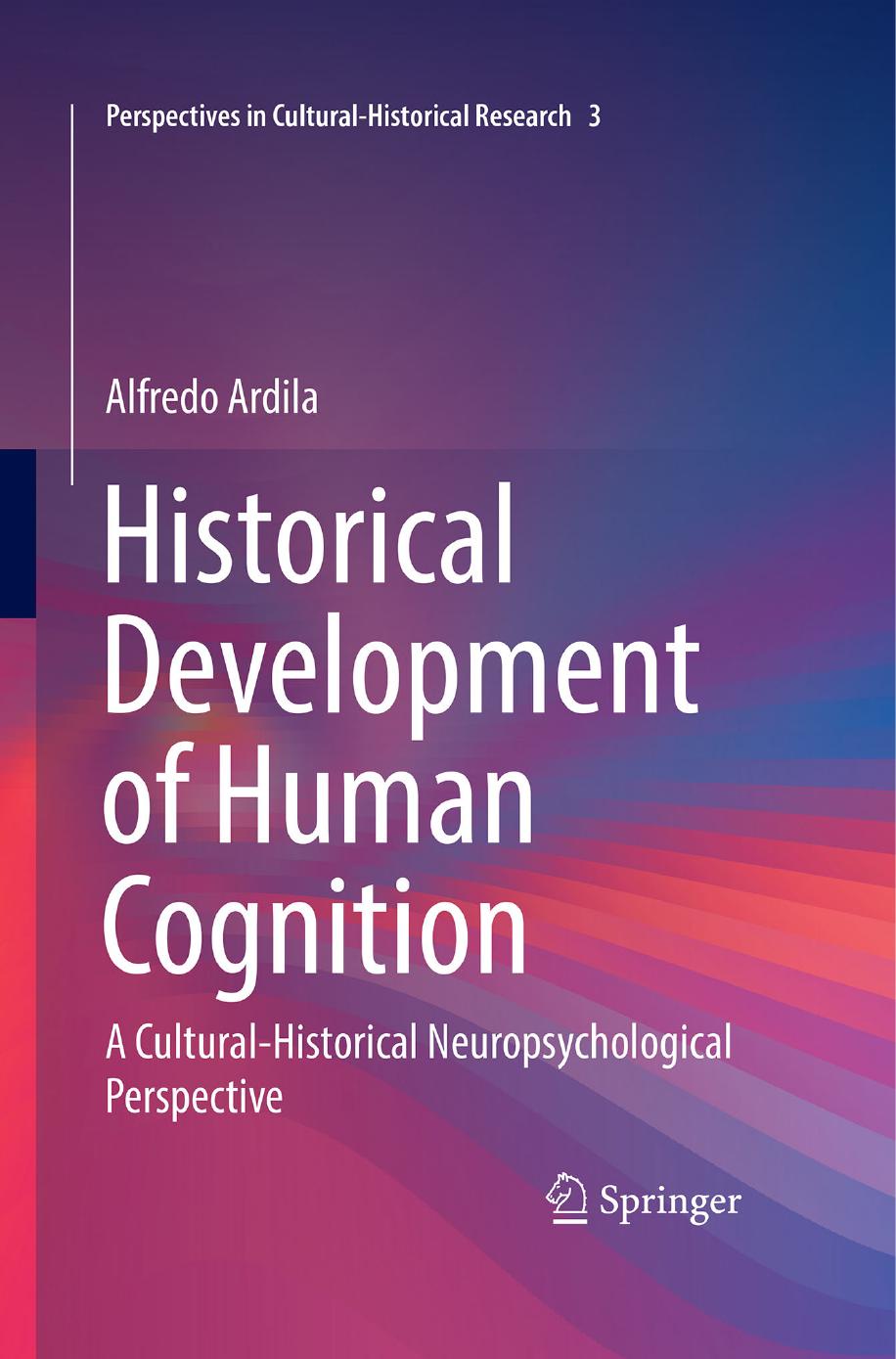Historical Development of Human Cognition by Alfredo Ardila

Author:Alfredo Ardila
Language: eng
Format: epub, pdf
Publisher: Springer Singapore, Singapore
5.2 Numerical Concepts in Animals
The origin of mathematical concepts can be traced to subhuman species. Throughout recent history different reports have argued that animals (horses, rats, dogs, chimpanzees, dolphins, and even birds) can use numerical concepts and perform arithmetical operations. Some of these reports represent evident charlatanry directed to the general public; others, however, are rigorous and highly controlled scientific studies (e.g., Rugani, Fontanari, Simoni, Regolin, & Vallortigara, 2009).
In general, it is agreed that some rudimentary numerical concepts are observed in animals (Agrillo, 2014). These basic numerical skills can be considered as the real origin of the calculation abilities found in contemporary man. For instance, pigeons can be trained to peck a specific number of times on a board, and rats can be trained to press a lever a certain amount of times to obtain food (Boysen & Capaldi, 2014; Koehler, 1951; Mechner, 1958; Capaldi & Miller, 1988). It could be conjectured that pigeons and rats can count, at least up to a certain quantity; that is, they can recognize how many times a motor act – to peck on a board or to press a lever – has been repeated. Whether or not this behavior can really be interpreted as counting is nonetheless questionable. This behavior can only be observed after long and painstaking training. Nonetheless, these animal responses (to peck or to press the lever) are not precise but just approximate. In other words, when the rat is required to press the lever seven times, the rat presses it about seven times (i.e., 5, 6, 7, 8 times). As Dehaene (1997, 2005) emphasizes, for an animal, 5 plus 5 does not make 10, but only about 10. According to him, such fuzziness in the internal representation of numbers prevents the emergence of exact numerical arithmetical knowledge in animals. Using highly controlled and sophisticated designs, it has been pointed out that chimpanzees can even use and add simple numerical fractions (e.g., 1/2 + 1/4 = 3/4) and perform simple arithmetical operations (Dehaene, 2005; Woodruff & Premack, 1981). These observations support the assumption that some quantity concepts can be found in different animals (Boysen & Capaldi, 2014). Interestingly, an approximate number system is also found in preschool children (Peng, Yang, & Meng, 2017).
Counting (or rather, approximately counting) motor responses is a motor act, as is walking or running. “Counting” lever pressings is not very different from estimating the effort (e.g., number of steps or general motor activity) required in going from one point to another. Counting in such a case could be linked to some proprioceptive and kinesthetic information.
In the human brain, Kansaku, Johnson, Grillon, Garraux, Sadato, & Hallett (2006) identified a network of areas involved in enumerating small number of auditory, visual, and somatosensory stimuli, and in enumerating sequential movements of hands and feet; this network included premotor cortex bilaterally, presupplementary motor area, posterior temporal cortex, and thalamus. The most significant consistent activation across sensory and motor counting conditions was observed in the lateral premotor cortex. Lateral premotor activation
Download
Historical Development of Human Cognition by Alfredo Ardila.pdf
This site does not store any files on its server. We only index and link to content provided by other sites. Please contact the content providers to delete copyright contents if any and email us, we'll remove relevant links or contents immediately.
The Art of Coaching Workbook by Elena Aguilar(51077)
Trainspotting by Irvine Welsh(21571)
Twilight of the Idols With the Antichrist and Ecce Homo by Friedrich Nietzsche(18568)
Fangirl by Rainbow Rowell(9175)
Periodization Training for Sports by Tudor Bompa(8211)
Change Your Questions, Change Your Life by Marilee Adams(7684)
This Is How You Lose Her by Junot Diaz(6833)
Asking the Right Questions: A Guide to Critical Thinking by M. Neil Browne & Stuart M. Keeley(5708)
Grit by Angela Duckworth(5555)
Red Sparrow by Jason Matthews(5425)
Paper Towns by Green John(5138)
Room 212 by Kate Stewart(5071)
Ken Follett - World without end by Ken Follett(4683)
Housekeeping by Marilynne Robinson(4392)
The Sports Rules Book by Human Kinetics(4342)
Double Down (Diary of a Wimpy Kid Book 11) by Jeff Kinney(4240)
Papillon (English) by Henri Charrière(4227)
The Motorcycle Diaries by Ernesto Che Guevara(4051)
Exercise Technique Manual for Resistance Training by National Strength & Conditioning Association(4020)
